I am beyond pleased to welcome and introduce you to my guest today. The garden writing industry produces relatively few (IMO) venerable writers compared with other other non-fiction sub-genres but Margaret Roach certainly falls within that category – venerable. As I write my first book, it is people like her that I look to for lessons in navigating this writing journey. She has a new book out this week (The Backyard Parables: Lessons on Gardening, and Life) and I am looking forward to the opportunity to delve into my copy. It promises to be entertaining, inspiring, and thoughtful — just what I want in my garden books on a snowy January day. – Rochelle
And Interview With Margaret Roach of A Way To Garden
How would you define your style (garden, fashion, interiors, other or all of the above)?
My garden, home, and personal styles couldn’t be more divergent now that your question makes me think of them all at once. I basically only wear black, and maybe that’s subconsciously because I don’t like to clash with the garden and house, in which I have a very high color tolerance—anything goes, especially lots of “reds” and greens together, Christmas or not. Example: My house is painted the darkest olive, trimmed in a sort of Chinese orange-red; inside, doors are a true red, and floors are painted ochre.
I’m the neutral element in it all, tee hee.
I would describe all my styles, however, as informal, un-fancy—and also chockablock. I like stuff: plants, pots, books, old things including ceramics, things from Asia, rusty things, dried things, primitive American things with seen-better-days paint clinging to them. Stuff.
The garden, too, is a mix of American and Asian (as is the nursery industry’s primary palette of hardy garden plants). I like to think of it as a 365-day garden—meaning beautiful every day of the year, at each moment in a distinct way.
Important, though not visual: I don’t use chemicals of any kind.
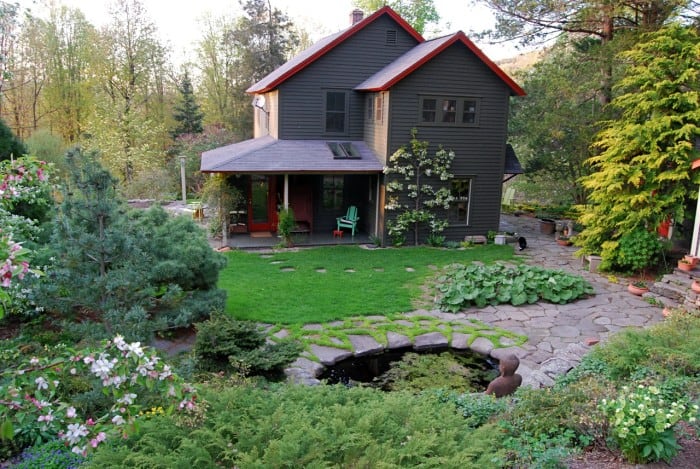
What is your garden like?
The garden, now more than 25 years old, is on a steep hillside in a cold zone, 5B. I only own two acres, but they’re surrounded by a large tract of state park and forest in a tiny rural former farming community where the Hudson Valley of New York meets the Berkshire Mountains of Massachusetts.
No hard lines are possible on such tilted land that has sensual curves and a feminine shape; the garden beds are all amoebic, not linear or geometric (except for some raised vegetable beds, of course).
It’s a collector’s garden, a bird lover’s garden, and a frog lover’s garden—although on the first score, my “collectible” plants were cutting edge when I got them 10 or 20 years ago, and now (thanks to advancement in micropropagation and other industry factors) are maybe less rare than they once were. I’m at the do-over stage in many areas, with things outliving their ornamentality (or just croaking and leaving holes!).
Do you have any favorite or sentimental plants or flowers?
I have had many phases and obsessions in my 30 years of gardening. Stalwart remnants of various moments among them—my Euphorbia stage, my Sedum phase, my prolonged Viburnum and winterberry-holly manic episodes—still live here with me.
I suppose most of all, I appreciate foliage much more than flowers. Big leaves (Astilboides, Rodgersia, even Petasites) make me swoon and seem to like growing here, lending a tropical air to a decidedly cool temperate zone. Among non-hardy things I store indoors, big leaves are also a common thread: Canna ‘Musafolia,’ for instance (the so-called “banana canna”), and Ligularia japonicum ’Giganteum’ (now called Farfugium, but my old naming habits die hard).
What is your earliest or favorite gardening-related memory?
Probably because there is a photo of it somewhere, I can recall my baby sister and myself (maybe 2 and 4, respectively) sitting on a chaise on my garden club grandmother’s patio under the wisteria trellis. We were wearing sherbet-colored summer dresses; her hair was orangey-red, mine yellow then. There were crazy big brown pods dangling everywhere around us.
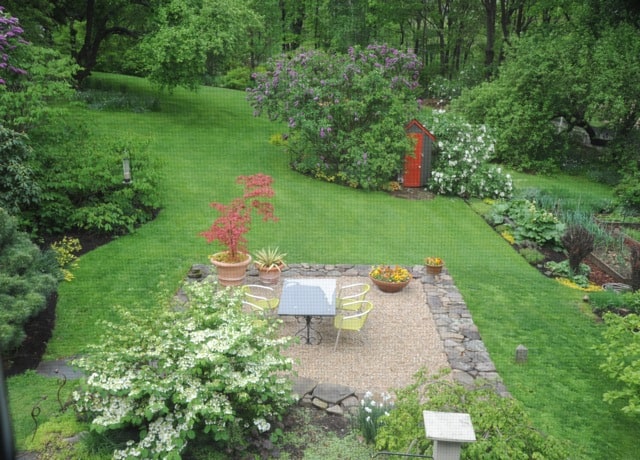
Three cardinal design rules From Margaret Roach to apply to your outdoor projects:
- Look out the window if you want to make a garden. (That’s where you will view it from mostly—not when you are outside mowing or weeding or raking. Plant it on axis from your best views from inside out.)
- Don’t just shop in May (or whenever the garden center opens in your area and is full of flowery, sexy things). Shop and/or visit other gardens for inspiration from earliest spring to latest fall, and always look behind the greenhouses, where the “not-showy” stuff is stashed out of the way. Ferret out the extra-late and extra-early things that way.
- Ask the birds and other garden companions what they want. Chances are they will pick things that provide sustenance of some form (nectar, pollen, fruit, seed, hiding places, shelter) that will also match the extra-early to extra-late times that are a little sparse visually in your garden, which is when birds also face the most challenges. Things like Lindera, Hamamelis, Aralia that won’t ever be shown off by the garden-center parking lot entrance.
Margaret Roach Recommends….
- BugGuide.net—with a name like Roach, you’d have to guess I’d be interested in such a place. Participate by uploading your bug photos or ID’ing others.
- WaterRight Inc.’s lightweight, drinking-water-safe garden hoses. I have finally stopped dragging stupid-heavy, kinked-up hoses. I love the colors, too—especially the dark olive one.
- The Hillsdale General Store (in the next town to me); old and new things for indoors and out, including fantastic tableware and serving pieces, and in the same historic building, locally handsewn Boxwood Linens.
- Utility Canvas aprons (I wear them when I teach workshops and host garden tours, as well as when cooking). Great colors.
all images provided by margaret roach

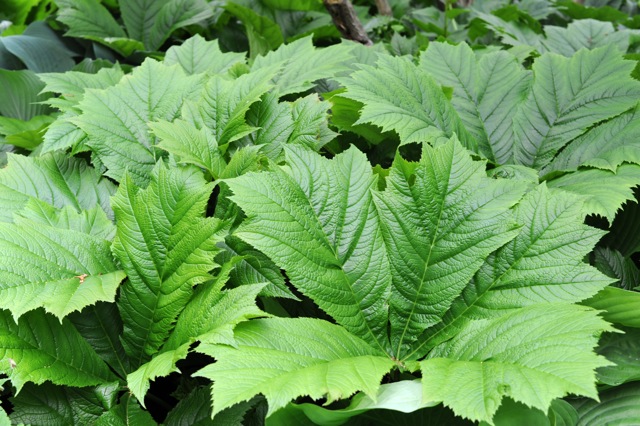
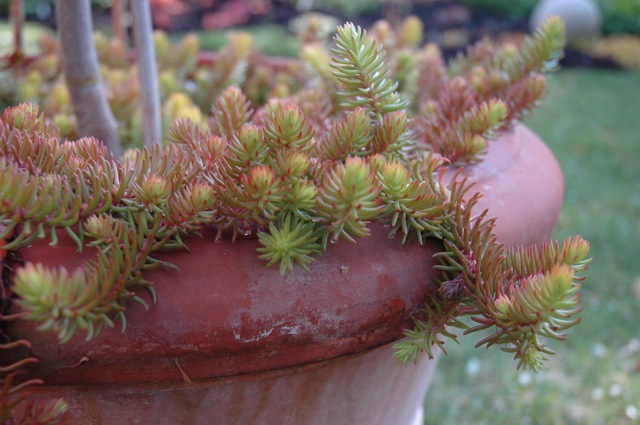
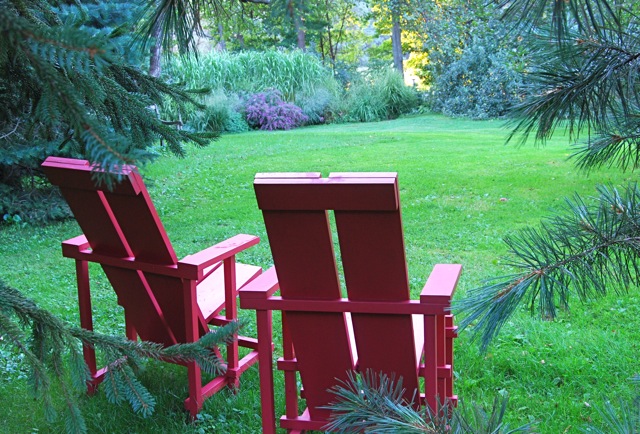
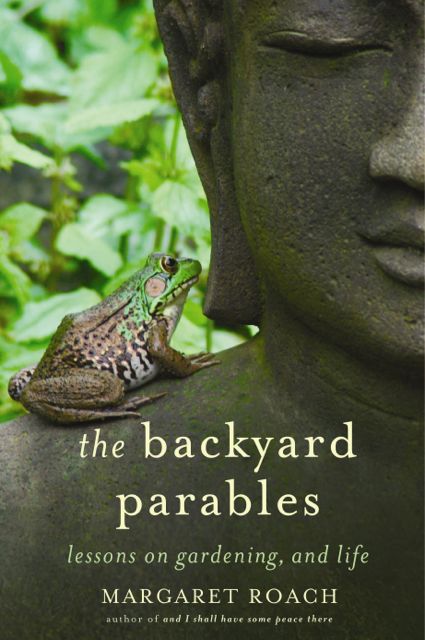
What a beautiful and peaceful garden setting. Creating and maintaining a landscape like that takes talent, knowledge and a good deal of planning. I wish I could envision landscaping like that.
what i love so much about margaret’s gardens is that it seems she let the land tell her what to do. so many of us have a vision for our gardens, then lock into it & spend a lifetime tussling with mother nature. ms. roach did it the right way.